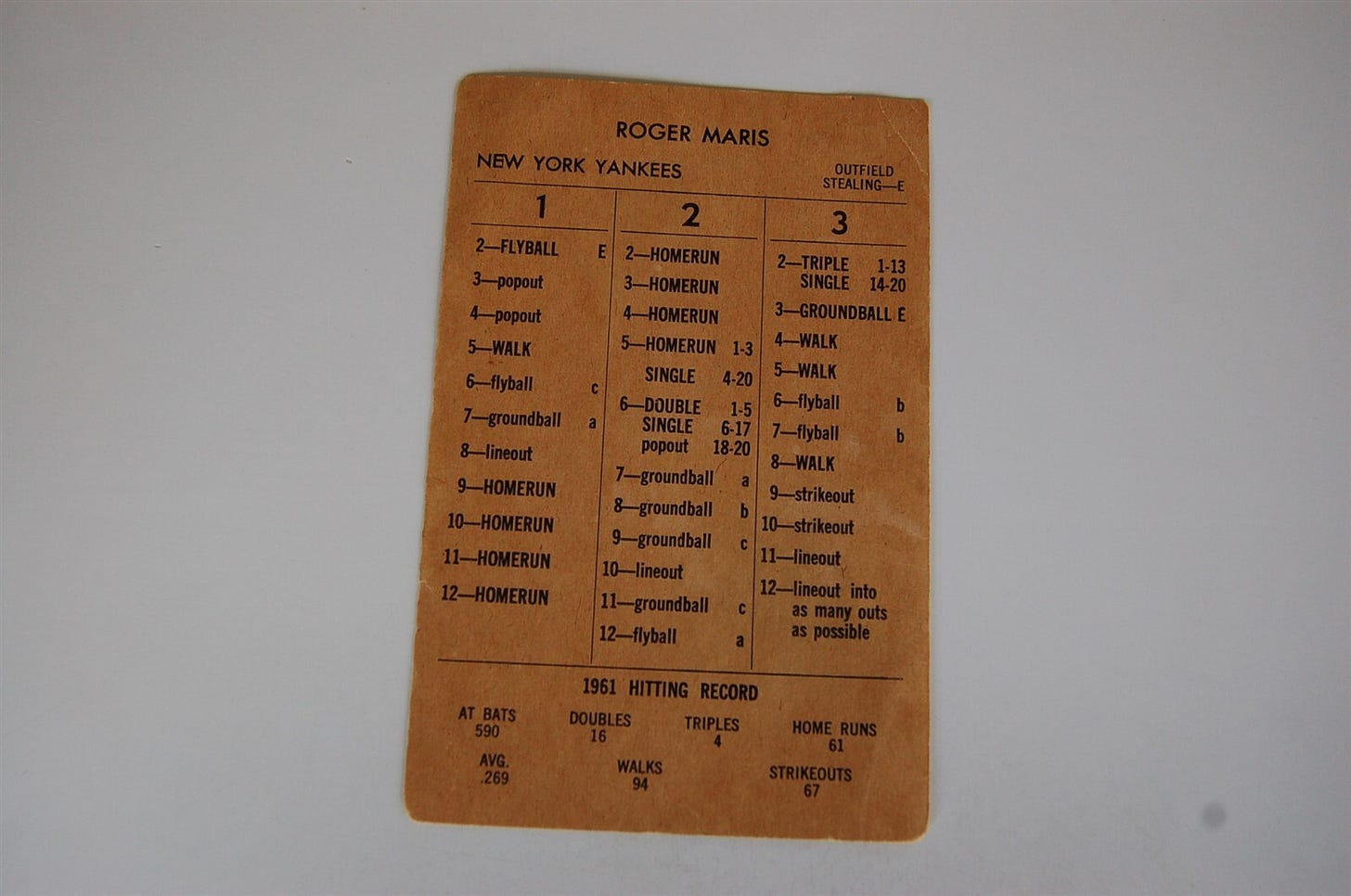Why Strat-O-Matic Almost Failed
It’s kind of hard to believe, but Strat-O-Matic almost failed the year it came out.
We’ve gone over a few of the reasons why. For example, the lack of complete teams was a huge problem, especially when Strat’s competitors in the market place (APBA in particular) offered enough teams for a complete season replay.
This lineup sheet says it all, in my opinion:
But there were other mistakes that Hal Richman made in those old days.
The cards were too big, for example. The cards in the Founder’s Edition are notable because of just how large they are. You can tell from the pictures that these aren’t your ordinary Strat-O-Matic cards:
This picture of an original 1961 Roger Maris card I grabbed from an eBay auction might give you a better idea:
The problem with having cards of this size is figuring out how you’re going to store them. I’m not sure if this was much of a problem in 1961 and 1962, but it really is an issue today. In fact, the current sized Strat cards are still a bit tall for my tastes, though I do understand why the company can’t exactly make cards the size of standard baseball cards.
Richman’s biggest problem, though, is one that readers of this publication will recognize immediately.
According to Strat-O-Matic Fanatics, Hal Richman had 1,000 copies of his initial game created.
I’m pretty certain that his optimism came from seeing that APBA had reported sales of $72,000 in 1959. Richman likely felt that he had a superior game engine, and that he’d attract a large number of sales.
He only sold 350 of those initial games — and a large number were apparently returned.
The problem is that over optimism. It’s the same problem that Clifford Van Beek faced in 1930, when he signed a contract for 1,000 copies of National Pastime: 500 up front, and 500 due upon the payment of the balance. Van Beek couldn’t even sell the initial run of 500, and wound up losing a court case as well as his business.
J. Richard Seitz was wise to limit his first run of APBA games to under 150.
If you want to enter into the tabletop sports business, it’s important to pace yourself at the beginning. You don’t want to print so many copies of your first edition that you wind up strangling your product before it has a chance to hit the market. It’s much better to go slow and to allow it to grow than to quit your day job right away and go for broke.






